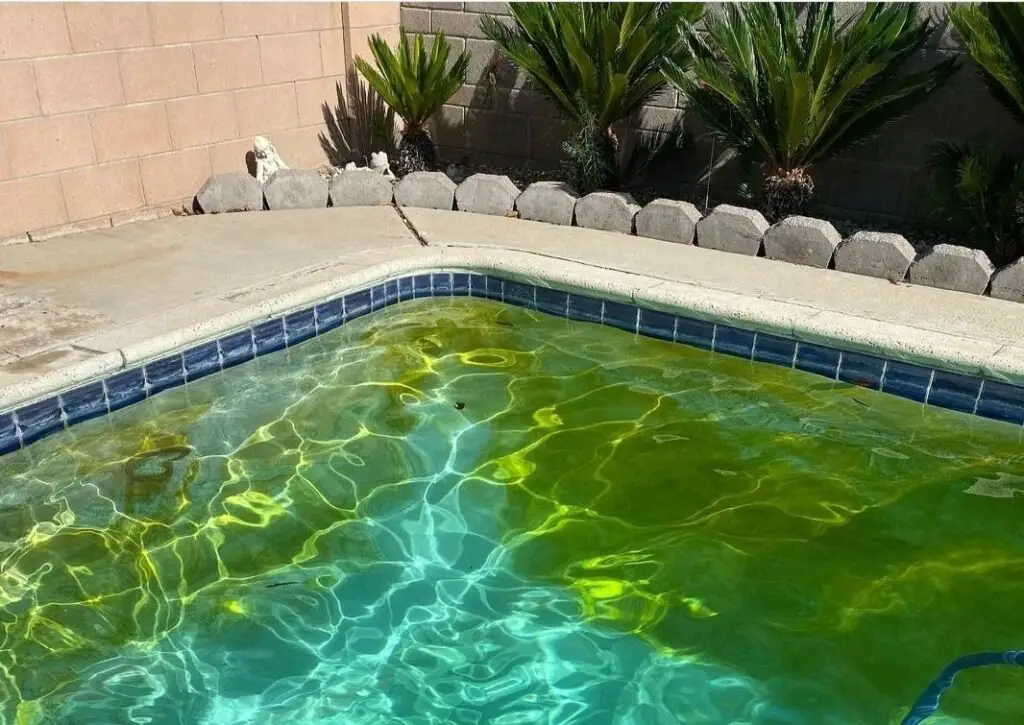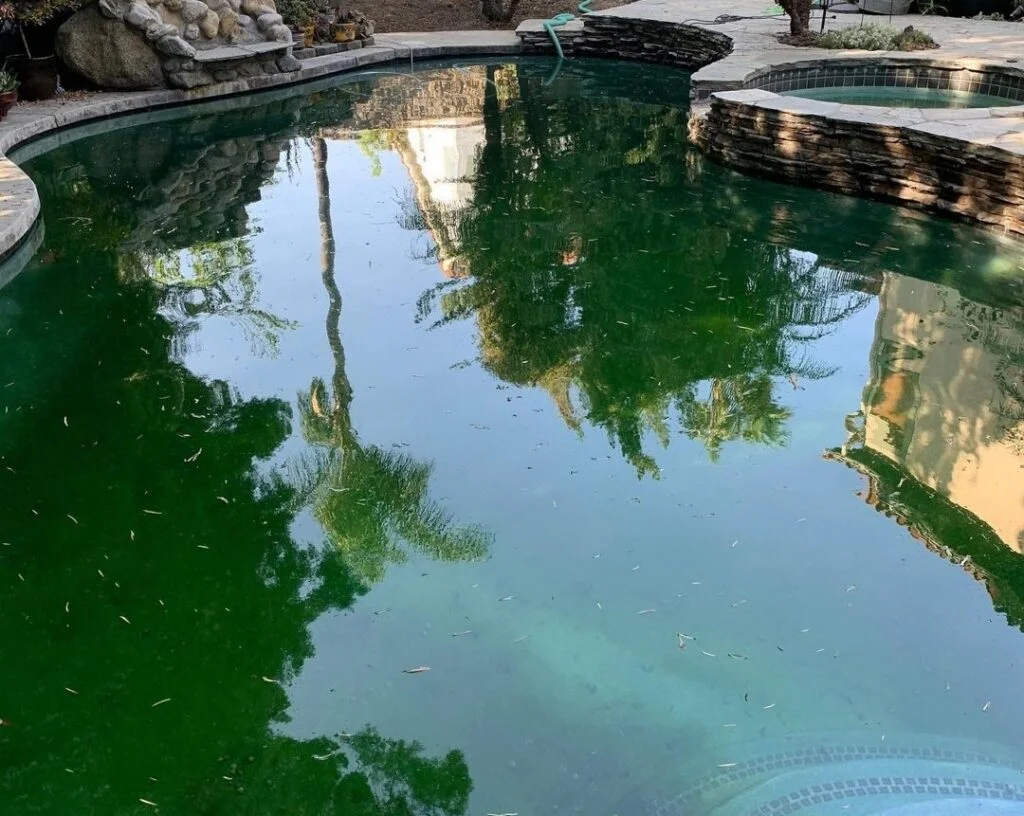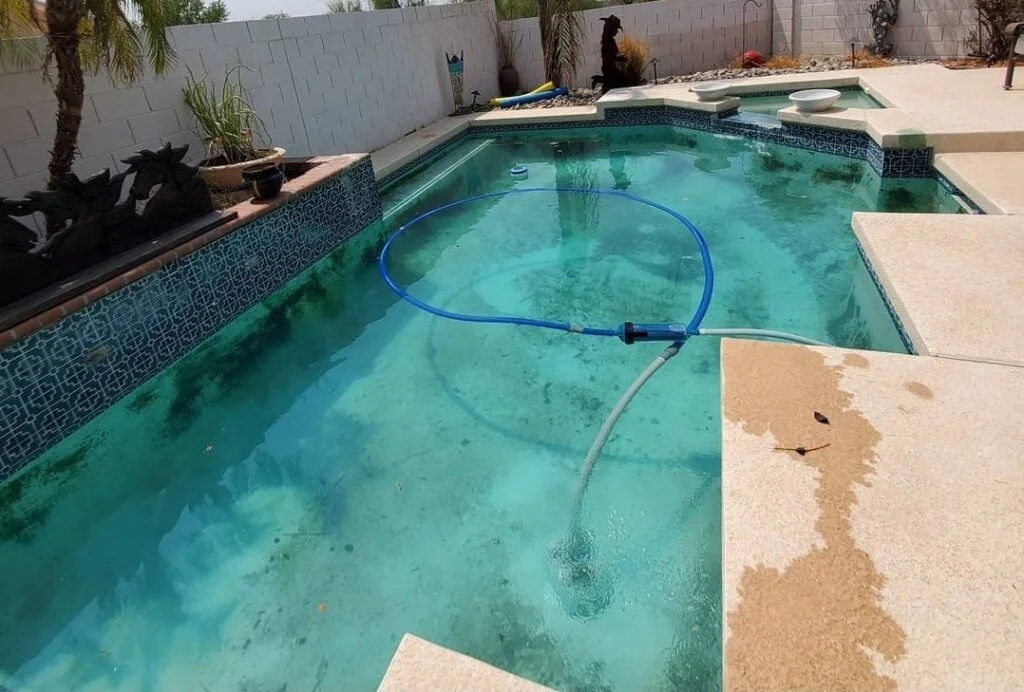Did you know that mustard algae is among the top three types of algae to grow in a pool? That’s right! That yellow stain on the floor or walls of your pool might not be sand or dirt, it could be mustard algae. However, a yellow stain alone isn’t sufficient information to know for sure. In this article, we will tell you what mustard algae looks like, so that it is easier for you to reach a diagnosis. But first, let us know what exactly mustard algae is.
What is Mustard Algae And How Is It Caused?
Mustard algae is a more popular name for yellow algae, and it is one of the biggest nightmares of a pool owner. Mustard Algae is a persistent, highly chlorine-resistant form of algae that can infect a pool and cause health hazards to the swimmers, especially to their eyes. Although it can occur in pools almost anywhere, it is more common in warmer climates as the growth of algae is favored by high temperatures.
Mustard algae can enter the pool through wind, water sources, and rain. Mustard algae spreads rapidly because it can be carried by almost anything, ranging from toys and hoses to swimsuits. Its growth is favored by a lack of cleanliness, imbalanced water chemicals, and improper filtration.
Naked Eye Appearance of Mustard Algae
Mustard algae is usually yellowish-green in color, with some forms being more brownish. It grows in clusters on the floors or more often, on the walls of the pool. This pattern of growth makes it look like a stain when seen from afar.
Unlike green algae, mustard algae never float on top of the surface of water. Therefore, apart from the spots on the floor or walls, the rest of the water appears clean.
The spots of mustard algae are more frequently present in parts of the swimming pool that are hidden or are away from direct sunlight. This includes dead spots and concealed areas such as those around the pump, underwater lights, above and below the ladder, and other equipment.

Mustard Algae- From troublefreepool.com
The particles of mustard algae are smaller than those of other forms of algae. This, along with the color and growth pattern makes mustard algae resemble pollen and sand or dirt. This is one of the major reasons for the frequent misdiagnosis of mustard algae.
Microscopic Appearance of Mustard Algae
If you examine mustard algae under a microscope, you will see tiny particles like the grains of sand. However, the particles of mustard algae are much smaller than sand or pollen, and appear to have halos around them.
If you are having trouble telling pollen or sand from mustard algae, read our in-depth guides: Mustard Algae or Sand? and Mustard Algae or Pollen?
How to Confirm the Presence of Mustard Algae?
By reading the description above, if you suspect that your pool has mustard algae you might want to confirm it. There are multiple ways to know for sure if the spots are mustard algae and not pollen or dirt.
The methods include testing the free chlorine level overnight, examining it under a microscope, and testing the growth in a container.
However, the quickest confirmatory test is much simpler and way easier. All you have to do is brush the yellow stains away. Then examine after 10 to 12 hours. If the yellow spots reappear, it is most definitely mustard algae.
However, if it does not reappear, and instead collects at the bottom of the pool, it is most probably pollen or dust. For more such tests, check out How To Test For Mustard Algae?
How to Differentiate Other Types of Algae From Mustard Algae?
Mustard algae is undoubtedly a menace to a swimming pool. However, it is not the only type of algae that infects pools.
There are multiple types and varieties of algae that tend to grow and thrive on water, especially when the circulation is poor and the pool chemicals are not well balanced. Some of the prominent pool algae are as follows:
1. Green Algae
As the name indicates, this algae is green in color and can grow in any part of the pool. It can also be seen floating on the surface of the water, however, its incidence is more common in shady parts of the pool.
Green algae looks slimy and makes the water appear murky and cloudy in addition to giving it a green tint. This type of algae is the most common in household pools.

2. Black Algae
This is perhaps the worst kind of algae to infect a pool. Black algae grows on tough, plastered areas of the pool and can even penetrate the concrete. It forms extensive roots underneath the surface of the pool, and only a part of it is visible. It is also the toughest to treat.

3. Pink Algae
Pink algae is relatively rare, and is formed around pool equipment such as underwater lights, ladder and pump.
Some other equally helpful pool care articles:
- How Long Does it Take to Clean a Pool?
- How to Clean and Prevent Algae in Sand Filters
- How To Tell If A Pool Is Saltwater Or Chlorine?
- How Often Do You Add Water To Your Pool?
- Too Much Clarifier in Pool? Here’s What You Can Do
- How Many Return Jets Should a Pool Have?
- Cheapest Way to Increase Calcium Hardness in Pool
- In Ground Spa Jet Placement- Everything You Need to Know
- How To Test For Mustard Algae?